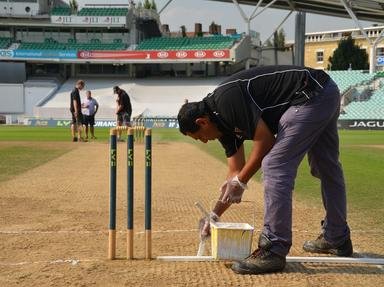Quiz Answer Key and Fun Facts
1. Which English all-rounder was vastly responsible for the "Miracle at Headingley" in 1981 with his undefeated innings of 149?
2. What name was given to the spiteful Test series played in Australia in 1932-33 when Douglas Jardine led England to a 4-1 series victory?
3. One of cricket's most iconic photographs is that of Andrew Flintoff with his arm across Brett Lee's shoulders at Edgbaston in 2005. What had just happened?
4. 4th June 1993 - English batsman Mike Gatting has just been bowled by what has been described as the "Ball of the Century". Who was the bowler?
5. Which pair of bowlers savaged the England team during the 1974-75 Ashes series in Australia?
6. Which English off-spinner achieved near perfection, taking nineteen of the possible twenty wickets in a Test match against Australia at Manchester in 1956?
7. Gary Pratt's run out of Ricky Ponting at Trent Bridge in 2005 brought about some harsh words from the Australian captain. What was Pratt's position in the English team?
8. Which Australian batsman, with a cricket sounding name, announced himself in his debut Test match in 1977 by smashing five consecutive boundaries off England's Tony Greig?
9. Which Australian, in 2013, fell just two runs short of completing the first ever century by a number eleven batsman in a Test match?
10. Needing only four runs in his last Test innings to finish with a career average of 100, Donald Bradman was dismissed for a duck (zero) by Eric Hollies. What sort of bowler was Hollies?
Source: Author
pollucci19
This quiz was reviewed by FunTrivia editor
Fifiona81 before going online.
Any errors found in FunTrivia content are routinely corrected through our feedback system.
